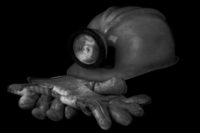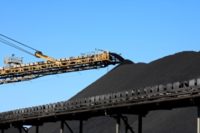MSHA issues hundreds of citations during September impact inspections
 The U.S. Department of Labor's Mine Safety and Health Administration announced last week that federal inspectors issued 374 citations, orders and safeguards during special impact inspections conducted at 18 coal mines and two metal/nonmetal mines last month. The coal mines were issued 292 citations, 28 orders and one safeguard, while the metal/nonmetal operations were issued 52 citations and one order.
The U.S. Department of Labor's Mine Safety and Health Administration announced last week that federal inspectors issued 374 citations, orders and safeguards during special impact inspections conducted at 18 coal mines and two metal/nonmetal mines last month. The coal mines were issued 292 citations, 28 orders and one safeguard, while the metal/nonmetal operations were issued 52 citations and one order.
Special impact inspections, which began in force in April 2010 following the explosion at Upper Big Branch Mine, involve mines that merit increased agency attention and enforcement due to their poor compliance history or particular compliance concerns, including high numbers of violations or closure orders; indications of operator tactics, such as advance notification of inspections that prevent inspectors from observing violations; frequent hazard complaints or hotline calls; plan compliance issues; inadequate workplace examinations; a high number of accidents, injuries or illnesses; fatalities; and adverse conditions, such as increased methane liberation, faulty roof conditions and inadequate ventilation.
As an example from last month's inspections, an impact inspection was conducted on Sept. 23 during the second shift at D & C Mining Corp.'s underground coal mine in Harlan County, Ky. Inspectors arrived at the mine and immediately captured and monitored the mine phone to prevent advance notification of their presence. The inspection resulted in seven 104(d)(2) withdrawal orders, one 107(a) imminent danger order and 11 104(a) citations, of which 16 were designated significant and substantial.
The imminent danger order was issued when the inspection team found a cigarette lighter near the continuous mining machine, marking the second time since February that smoking articles were found underground at this mine. This condition provided an ignition source in the presence of combustible materials, loose coal and coal dust accumulations in an area with inadequate rock dust to prevent an explosion. The September impact inspection was the sixth conducted at the mine since April 2010.
Inspectors wrote two of the withdrawal orders for inadequate roof and rib supports at the face area of the mine where miners normally work and travel during their shift. Violations included loose, unsupported drawrock, as well as wide roof and rib bolt spacing, all of which created the potential for roof and rib collapses. Additionally, inspectors found inadequate rock dusting, use of a non-permissible cap lamp, accumulations of combustible material, an inadequate smoke search program, inadequate pre-shift examinations, improperly working parking brakes on mobile equipment, nonworking self-contained self-rescuer units, a poorly maintained roof drill dust collection system and inadequate illumination on the mine surface areas.
"The closure order is still one of the most effective tools inspectors have to bring about compliance, even during impact inspections," said Joseph A. Main, assistant secretary of labor for mine safety and health. "We will not hesitate to use this and other enforcement tools to protect the nation's miners."
As a second example, MSHA conducted an impact inspection Sept. 12 to 16 at Robinson Nevada Mining Co.'s Robinson Operation, a large surface copper mine located in White Pine County, Nev. MSHA issued 34 citations during the inspection, including 25 citations to the mine operator and nine to independent contractors working on mine property.
Among the hazards inspectors cited were inadequate testing of electrical grounding systems, and unattended pieces of mobile equipment that were left with engines running and parked on a grade without properly blocking the wheels. In addition, approximately 30 compressed gas cylinders were stored without caps to prevent injury to the valves which, if damaged, could pose an explosion risk. Inspectors also found an open excavation hole that was not supported to prevent material from falling onto workers.
Since April 2010, MSHA has conducted 347 impact inspections, which have resulted in 6,187 citations, 584 orders and 22 safeguards.
Looking for a reprint of this article?
From high-res PDFs to custom plaques, order your copy today!




